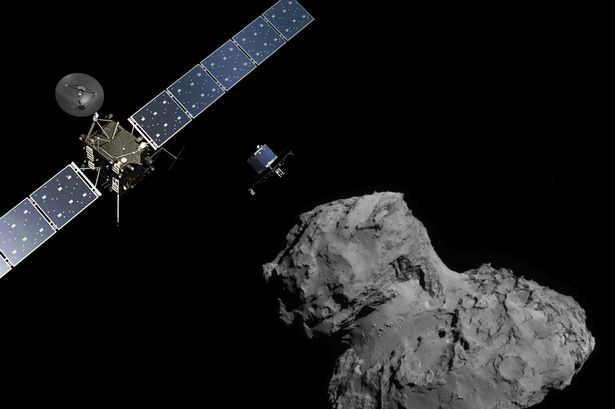Mission Complete: Probe is Successfully Landed on Commet
November 25, 2014
On November 12th of this Year, the European Space Agency’s (ESA) mission to land a probe on a comet,Churyumov-Gerasimenko — better known as Comet 67P which is speeding at about 80,000 miles per hour, some 300 million miles from Earth, was a tremendous success. The mission was approved in 1993 and launched in 2004, with the probe taking 10 years to reach its final destination. The goal of the mission was to study the properties of this comet, in particular its composition, in an effort to learn more about the early history of the solar system. Comets are the best-preserved fossils from our distant origins, some dating back 4.6 billion years. Comets mostly consist of rock, water in the form of ice, and a combination of frozen gases.
This is the first time that a spacecraft has ever landed on a comet nucleus. As amazing as this accomplishment is, it didn’t go without some complications. Solar panels on the probe were designed to keep its batteries running. However, the lander ultimately settled in a shadowy part of the comet, therefore scientists were only able to retrieve information from it until its charge expired. However, they still managed to collect a lot of data, including the first ever images from a comet’s surface.
The probe went silent on November 14th, but it’s believed that by around August 2015, when the comet has moved closer to the sun in its orbit, the lander’s solar panels may receive enough light to function again.
